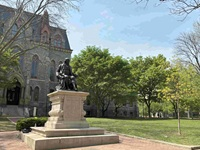Speaker
Description
The search for sub-GeV dark matter has pushed for the development of detectors with sub-eV energy resolution. Superconducting sensors have emerged as leading candidates in this effort. A central challenge in this field is achieving lower detector thresholds while minimizing background levels to maximize sensitivity to low-mass dark matter. At SLAC, the DMQIS group is addressing this challenge through several avenues: investigating novel materials that require minimal excitation energy, developing ultra-low noise cryogenic readout systems to enhance resolution, and deploying high-precision cryogenic calibration tools to better understand and mitigate detector backgrounds. This talk will focus on developments on the TES-based detectors we fabricate in-house at SLAC. We will present recent progress on detectors incorporating substrates with low band gaps and light nuclei (e.g. SiC, diamond) which broaden sensitivity to lower mass dark matter models. As experiments begin exploring the sub-GeV dark matter space, backgrounds like the Low Energy Excess pose a strong barrier to further enhancements in detector sensitivity. We will describe the group's efforts to precisely characterize the LEE in our TES detectors using a custom-built cryogenic MEMS-based calibration source with fine beam-steering capability. These measurements are critical for informing the design of next-generation, ultra-low background detectors. We also will describe progress on a new effort working with the BeEST collaboration to perform a precision nuclear recoil calibration of TES-based dark matter detectors by measuring the radioactive decay of ion-implanted 7Be. These results should enable further refinement of detector response models.

